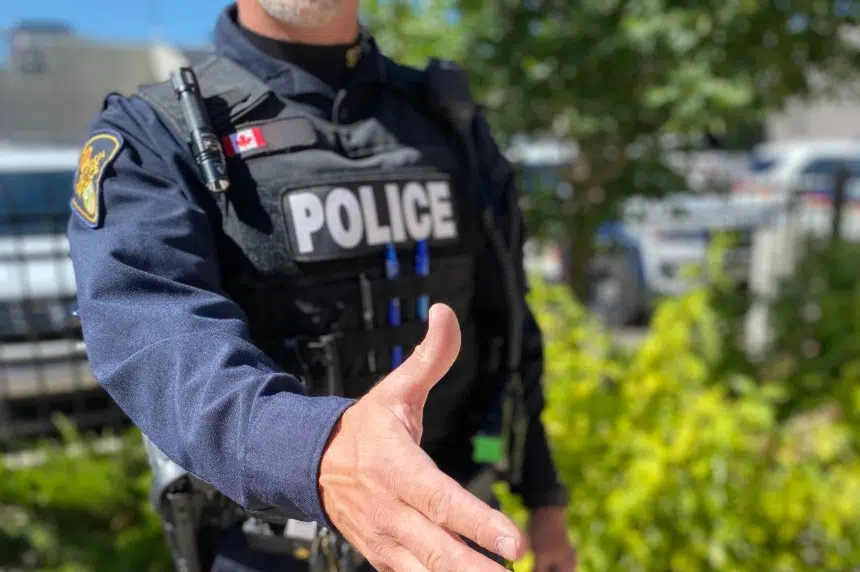Regina and Saskatoon have many comparable characteristics, but also many that set them apart.
In an interview in early March, Regina Police Chief Evan Bray said the two cities’ outlooks on crime differ. That also can be said with those specific crime trends, including targeted rates, gangs and different types of gangs.
When it comes to the overdose crisis, the two cities are dealing with differing circumstances.
According to the Regina Police Service’s manager of public information and strategic communication, Elizabeth Popowich, the service is aware of 483 overdose occurrences since January.
Of those occurrences, police have responded to 92 calls, with EMS or other emergency services responding to the other reports.
In that same time period in Saskatoon, the police service has responded to only 82 occurrences.
Medavie Health Services, which operates EMS response in Saskatoon, did not respond to an interview request by the time of publication. Medavie has not been able to track its call information recently due to a change in reporting mechanism.
These figures include both fatal and non-fatal circumstances. In Regina, Narcan was administered in five events. In Saskatoon, police have had to administer Narcan in 11 of these events.
When looking at the latest Saskatchewan Coroners Service report, this is where the numbers begin to skew.
Saskatoon has had four confirmed deaths in 2021, and another 64 confirmed in 2020.
In Regina, the report states 16 families lost a loved one this year up until Tuesday. Regina police said there have been 43 apparent overdose deaths so far this year, with the remaining 27 deaths yet to be confirmed by the coroner’s service.
The latest coroner’s report shows that 113 people lost their lives to overdose in Regina in 2020.
So how do these police forces begin, or work to, tackle the addiction crisis? Saskatoon police superintendent Patrick Nogier, who is in charge of the Criminal Investigation Division, said the organization is very concerned with the drugs available in the Bridge City.
“We know we have a designated group of individuals that their day-to-day job and mission is to try and combat illegal activity that has to do with drugs in our city,” he explained.
“It seems to be a little bit of a supply-and-demand type of thing that we have to be aware of. Our focus has never been on the individuals that are using drugs. We recognize that’s where the impacts are. It’s upsetting lives, and turning families upside down and inside out.
“We know there’s a drug supply within our city that there is a demand for. And where there’s a demand for drugs, then you’re going to have individuals that try and profit from that.”
Nogier said the service has been able to execute a few significant seizures so far in 2021. The force has seized five kilograms of methamphetamine and 0.75 kilograms of fentanyl since Jan. 1.
“That’s an extraordinary, large amount of fentanyl when you understand and know what that drug is capable of doing to a human being,” he said.
Nogier explained the going street rate for one kilogram of fentanyl is $120,000, although it fluctuates dramatically. One kilogram of methamphetamine goes for around $13,500.
This means in just those two seizures, approximately $610,125 worth of illicit drugs were taken off Saskatoon’s streets.
When it comes to the way Saskatoon police look at the war on drugs, particularly surrounding the targeting approach, Nogier explained it’s not the users they’re looking to incarcerate.
Its focus lies more with individuals bringing supply into the city.
What’s next, and how do we work through this crisis?
With Saskatchewan’s overdose death crisis continuing to worsen, many are wondering what to do next.
With 439 confirmed or suspected overdose deaths in the province since January 2020, this crisis isn’t coming out of thin air for police, who saw the deaths balloon in March 2020 when the lockdowns were imposed.
“We know that we can’t work in a silo; we have to work together,” Nogier explains.
He said the provincial Drug Task Force Strategic Plan has been put in place, identifying six strategic streams of action to try and figure out the crisis.
The streams include emergency management, prevention, harm reduction, recovery and suppression, along with data collection, trends and risk analysis.
“Right away, two of those jump out at you as being very important to us — the suppression component, for obvious reasons, and the second one is data collection, trends and risk analysis,” Nogier said, with his reasoning lying with helping to keep track to find trends or patterns that can help assist in future planning.
He said he believes there is strength in prevention, with an emphasis now for members to make public and school presentations to better educate those in the community.
“To try and reinforce good patterns and behaviour, and bring a certain awareness back to the community with respect to some of the harmful effects of drugs,” he added.
Looking to the future, Nogier said a collaborative effort must be put in from different agencies to get Saskatchewan back on track — and help save lives.
“What we do recognize is we can’t do it alone,” he said.











